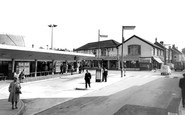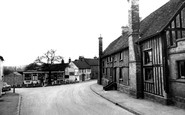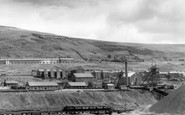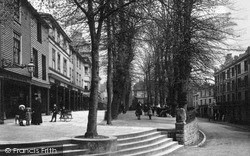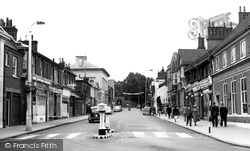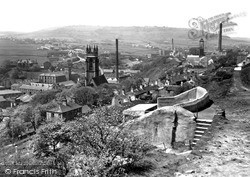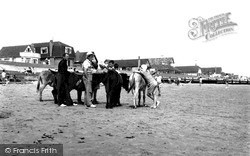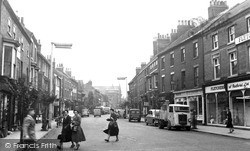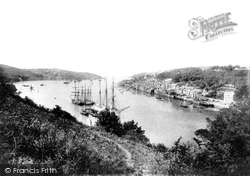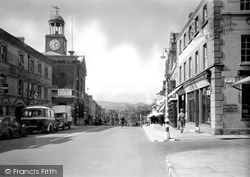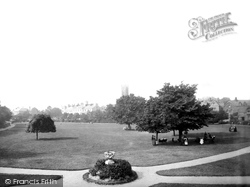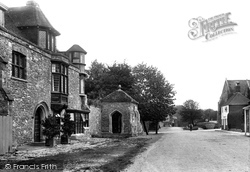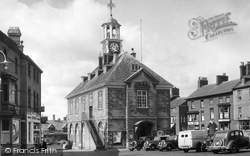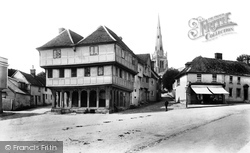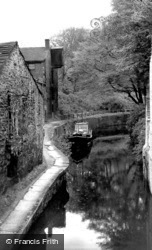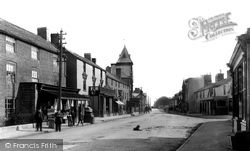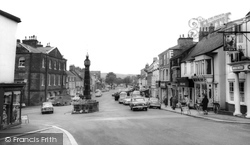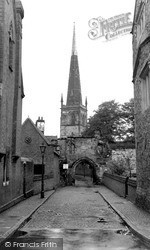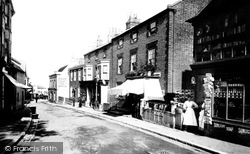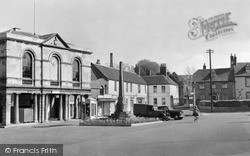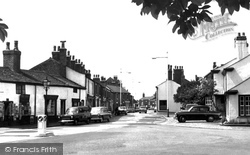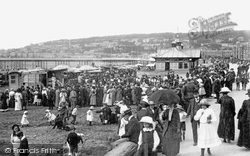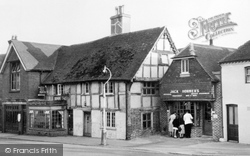Places
26 places found.
Those places high-lighted have photos. All locations may have maps, books and memories.
- Town End, Derbyshire
- Town End, Buckinghamshire
- Town's End, Somerset
- Towns End, Dorset
- Town End, Merseyside
- Town End, Cambridgeshire
- Town's End, Buckinghamshire
- West End Town, Northumberland
- Bolton Town End, Lancashire
- Kearby Town End, Yorkshire
- Town End, Cumbria (near Grange-Over-Sands)
- Town End, Cumbria (near Bowness-On-Windermere)
- Town End, Yorkshire (near Huddersfield)
- Town End, Yorkshire (near Wilberfoss)
- Town End, Cumbria (near Appleby-in-Westmorland)
- Town's End, Dorset (near Melbury Osmond)
- Town's End, Dorset (near Swanage)
- Town End, Cumbria (near Ambleside)
- Town End, Cumbria (near Lakeside)
- Town End, Cumbria (near Kirkby Lonsdale)
- Town End, Cumbria (near Ambleside)
- Town's End, Dorset (near Bere Regis)
- West-end Town, South Glamorgan
- Townend, Derbyshire
- Townend, Strathclyde (near Dumbarton)
- Townend, Staffordshire (near Stone)
Photos
23 photos found. Showing results 1,041 to 23.
Maps
195 maps found.
Books
3 books found. Showing results 1,249 to 3.
Memories
3,719 memories found. Showing results 521 to 530.
Mevagissey Museum
I have many childhood memories of Mevagissey. My parents bought a cottage in Cliff Street, Mevagissey during the late 1950s. We used it as a holiday home until 1965 when my father retired from designing Colt Houses (all timber ...Read more
A memory of Mevagissey in 1969 by
Old Hatfield
I was employed as an electrician, by a company known as J.Hodge and spent 18 months in Hatfield House re-wiring the East Wing. I knew Old Hatfield intimately as I lived in Hatfield for 20 years. When I went back there in 1995 I was ...Read more
A memory of Hatfield in 1947 by
Life In Wellingborough After The War
My family moved to 121 Midland Road during the winter of 1946 as my father worked in a local paint factory till 1948. There was a huge monkey puzzle tree in the front garden. I was 7 and my sister was 10. ...Read more
A memory of Wellingborough in 1947 by
Working As A Conductor
I remember in 1960 working as a conductor on the 'Western Welsh. My driver was Dai Williams, and my uncle, Danny Evans, was a driver, along with Ernie Sharrott. We had the best Solo card school in town, and I can say now at ...Read more
A memory of Bridgend in 1960 by
Raf Bletchley 1950 51
Hello Former RAF Bletchley 'inmates,' I spent a couple of happy years at RAF Bletchley which I would describe as just a dormitory station where we ate, slept and relaxed during off-duty hours from our work at RAF Stanbridge, ...Read more
A memory of Bletchley in 1950 by
Holiday
We visited the Lizard during our summer holidays. It was the hottest year for years. We stayed in a caravan, on a caravan site near the Mousehole junction. There was my parents, my brother, sister and in the other caravan, next door was my two ...Read more
A memory of Lizard in 1978 by
Holmfirth
I think it was 1976 when our dad took us to Holmfirth. He loved watching 'Last of the Summer Wine' which was filmed there. As we were children we sat in the back and watched the hills coming closer and closer. Dad drove careful up the ...Read more
A memory of Holmfirth in 1976 by
School Days
I attended the local school. I now live in Tasmania, Australia. Seeing this photo of my school brings back so many happy memories. Mrs Butler was my headmisstress and I remained in contact with her even when they retired to the Isle of ...Read more
A memory of Standon in 1968 by
More Memories From My Childhood In Gilfach
I remember when I was little there was a shoe shop called Dimmocks, also near the church I remember a shop called The Dairy where I was allowed 3d worth of sweets if I'd been good, they came in a ...Read more
A memory of Gilfach Goch in 1961 by
Darknell Family
This isn't a memory, more of a request. I am researching my family tree and a member of my family moved to the area in about 1880, his name was john Darknell and he married a Francis 'Fanny' Hamilton. He is recorded as living in ...Read more
A memory of Gilfach Goch in 1880 by
Captions
5,054 captions found. Showing results 1,249 to 1,272.
Then, just as it is today, this area of the town was an exclusive parade of expensive little shops, smart tea shops and expensive restaurants.
The Welshpool and Llanfair Railway still chuffs its way along the eight-mile narrow gauge line between the two towns.
The large building, centre left, is the old Town Hall, with the Library and Mechanics' Institute to its left (now Council offices).
A hundred years ago, Huddersfield was a collection of villages - now Milnsbridge has been almost absorbed, and is on the outskirts. The town is packed with mills and machinery works.
The land was divided into plots, and wooden chalets erected on them. The town was cheery enough in holiday weather, but winter could bring disasters.
Grove Street runs east from the Market Square, a mix of 18th- and 19th-century buildings, and a mix of shops and houses.
Hall Walk on the Bodinnick side provides a fine view down the harbour to the open sea, with the town on the right.
The picturesque cliffs, coves, glens and wooded scenery that surround Hastings appealed to the Romantic tastes of the years after 1800.
Deep shadows engulf the Greyhound Hotel (left), with the Town Hall behind, in this lunchtime view westwards to Colmer`s Hill (centre).
Then, in 1879, William Rock, a local man who went to London and made a fortune, returned home to improve Barnstaple.
Winchelsea is an 'ancient' town, like Rye, equal in status to the Cinque Ports and having to provide a quota of ships for the English fleet.
The largest town in south-west Northamptonshire, Brackley had a market charter since before 1217, its wealth having come from wool.
Allegedly built around the start of the 15th century, this was the headquarters of the Cutlers` Guild, and later the meeting-place of the town`s burgesses.
Work on the Leeds & Liverpool began in 1770.
Work on the Leeds & Liverpool began in 1770.
This pleasant market town lies just inland from the chalets and caravans of the 'honky-tonk' north coast between Rhyl and Colwyn Bay.
It is ten years after G66010, and more cars are evident. This view is flanked on the left by the shop front of Greenwoods chemist's and druggist's shop.
A prominent Norman castle mound, the remains of the town walls, including Prince Rupert's Gateway, the castle hall and St Mary de Castro church form the finest historic enclave in the city.
Newhaven developed as the 'new town' after the River Ouse shifted its mouth in 1579. The mouth was stabilised in 1733, and there were great plans for the port.
This unidentified ford is possibly located where the A55 expressway now passes the town. The water level seems very low, which is fortunate for the lady wearing the long skirts.
The Town Hall and the First World War memorial are important focal points. A weighbridge plate can be seen between the two.
Church Town in the parish of North Meols had long had a tradition of sea-bathing, associated with a couple of local festivals known as Big and Little Bathing Sundays, when the natives took to the waters
In addition to pure air, Weston has an unlimited supply of pure water from a never-failing spring, owned by the town, which is said to have its source in the Mendip range of hills.
Fleur-de-Lys, the timber-framed building, is one of Hailsham's most interesting and oldest buildings.
Places (26)
Photos (23)
Memories (3719)
Books (3)
Maps (195)



